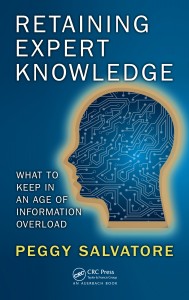It’s kind of like being a new parent…
The focus of Working with Subject Matter Experts includes the technical aspects of knowledge capture – the process of what to capture and how to efficiently capture it in a way that makes transfer easy and accessible.
One of the biggest hurdles for people who work with experts to capture and transfer information is the human element. People who capture knowledge from experts find they often must overcome resistance and reticence on the part of the expert.
Here’s why. Experts are used to being in charge. Either they are literally the leader of the organization, or they are one of the smartest people in the organization who house valuable information between their ears. It takes a leap of faith for experts to transfer their knowledge to someone else because it requires two difficult issues for anyone who is used to being on top – trusting other people to do an important job well and letting go so they can do it. After all, the inhouse leader and expert in charge of the domain has often been “getting it done” by himself or herself since the beginning. I have worked with more than one expert who has founded a company or organization, and it is their baby. For any new momma who has ever left her infant with a sitter to run to the grocery, you know about trusting your baby to someone else for the first time. This is kind of like that.
As a writer who has worked with experts and as a momma who has left her babies with someone else for the first time, I offer a few pointers to working with experts to help them trust and let go.
- Start small. Don’t expect to get the keys to the kingdom the first few tries. You need to gain the trust of the expert until they know that you understand them and can translate or execute for them in a way that is faithful to their mission and intent. Leave your baby for short periods of time and extend it slowly so your child can eventually go to Kindergarten without you.
- Examine resources around the expert to find support for expansion. When a leader is having to trust and let go, it is in the interest of furthering their passion. Maybe they have to let go of some tasks so they can concentrate on more important things. Maybe they want to preserve their work so they can move on. Or maybe they want to preserve it for posterity much later down the line. In any event, knowledge and responsibilities will have to be shifted today, so look for people around them who can be trusted to do the job faithfully in place of the expert. Slowly transfer tasks to trusted others. To extend the mommy metaphor, ask the teenager next door to help you with the baby while you are at home so you can watch them in action before you leave them alone with your child.
- Put supports in place to build a replicable framework. Figure out how things are done and capture the processes in steps and schedules. With the right documentation and systems, people will know what to do, how to do it and when to do it to keep things moving without direct input from the expert. Mommies do this when they write down baby’s schedule for the sitter.
- Prepare for contingencies. Life happens. Build in backup plans and have extra resources on hand. This might require having a virtual assistant on call to provide administrative support in case the regular staff is overwhelmed, for example. Or you may want to have strong ties to a professional network that can provide experienced engineers (or whatever) to pull through a project. Remember, the hands-on expert has been getting it done all the time and often by themselves. Your goal is to change that dynamic so they can be replicated. Mommies post Grandma’s and doctor’s cell phone for the sitter in case of emergency.
- Expect change. As knowledge and control leaves the hands of the expert, the input of other people will have two effects 1) things will be done a bit differently with different people executing tasks 2) the organization will be able to start to grow. Those changes require adaptation from everyone, including the expert.
Be prepared to be an organizational ninja as the expert watches their baby grow up and away from them with supports and systems in place. Help the expert expand his or her knowledge and mission beyond anything he or she can do on their own.
Send those babies out to grow into all they can be.









